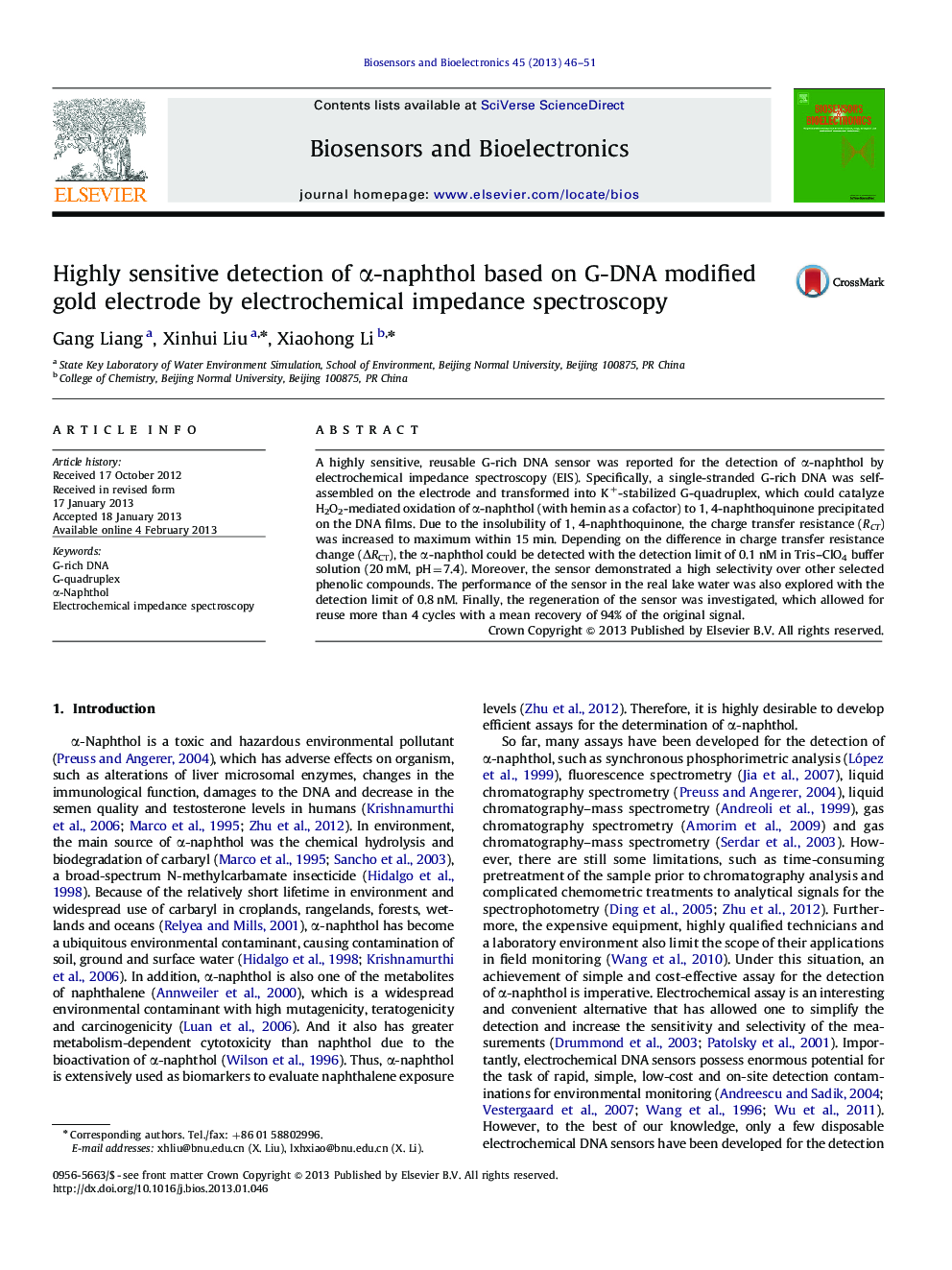| کد مقاله | کد نشریه | سال انتشار | مقاله انگلیسی | نسخه تمام متن |
|---|---|---|---|---|
| 867025 | 1470986 | 2013 | 6 صفحه PDF | دانلود رایگان |

A highly sensitive, reusable G-rich DNA sensor was reported for the detection of α-naphthol by electrochemical impedance spectroscopy (EIS). Specifically, a single-stranded G-rich DNA was self-assembled on the electrode and transformed into K+-stabilized G-quadruplex, which could catalyze H2O2-mediated oxidation of α-naphthol (with hemin as a cofactor) to 1, 4-naphthoquinone precipitated on the DNA films. Due to the insolubility of 1, 4-naphthoquinone, the charge transfer resistance (RCT) was increased to maximum within 15 min. Depending on the difference in charge transfer resistance change (ΔRCT), the α-naphthol could be detected with the detection limit of 0.1 nM in Tris–ClO4 buffer solution (20 mM, pH=7.4). Moreover, the sensor demonstrated a high selectivity over other selected phenolic compounds. The performance of the sensor in the real lake water was also explored with the detection limit of 0.8 nM. Finally, the regeneration of the sensor was investigated, which allowed for reuse more than 4 cycles with a mean recovery of 94% of the original signal.
► We provide a new strategy of G-DNA modified gold electrode to detect α-naphthol.
► UV–vis spectroscopy, fluorescence spectra, SEM and DPV confirm the mechanism.
► The sensor exhibits better selectivity, sensitivity and regenerability.
► The detection limit is 0.1 nM in buffer solution, or 0.8 nM in natural lake water.
Journal: Biosensors and Bioelectronics - Volume 45, 15 July 2013, Pages 46–51